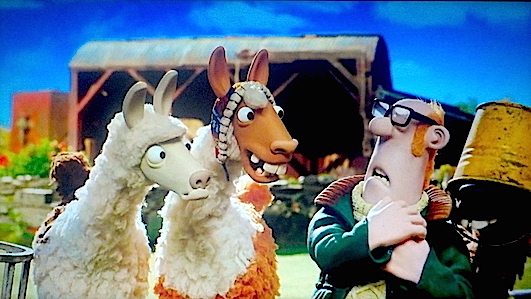Search
Recent comments
- sino-innov....
5 hours 45 min ago - the star mangled banner....
7 hours 45 min ago - causing concern....
9 hours 21 min ago - cashing in....
10 hours 43 min ago - russia !!!!....
15 hours 19 min ago - euroclear....
15 hours 45 min ago - trump's USA....
15 hours 59 min ago - suckering....
16 hours 11 min ago - political shake-up....
18 hours 41 min ago - jewish crooks....
1 day 4 hours ago
Democracy Links
Member's Off-site Blogs
llamas to the rescue

In addition to larger antibodies like ours, llamas have small ones that can sneak into spaces on viral proteins that are too tiny for human antibodies, helping them to fend off the threat. The hope is that the llama antibodies could help protect humans who have not been infected.
International researchers owe their findings to a llama named Winter, a four-year-old resident of Belgium. Her antibodies had already proven themselves able to fight Sars and Mers, leading researchers to speculate that they could work against the virus behind Covid-19 – and indeed, in cell cultures at least, they were effective against it. Researchers are now working towards clinical trials. “If it works, llama Winter deserves a statue,” Dr Xavier Saelens, a Ghent University virologist and study author, told the New York Times.
To any llama aficionado, this news should come as no surprise. The animals have developed a reputation for healing. Llama antibodies have been a fixture in the fight against disease for years, with researchers investigating their potency against HIV and other viruses.
read more:
https://www.theguardian.com/world/2020/may/16/llama-coronavirus-antibodi...
- By Gus Leonisky at 18 May 2020 - 9:38am
- Gus Leonisky's blog
- Login or register to post comments
peaceful spitting animals...
The llamas in Shawn the Sheep (image at top) were far from peaceful and created havoc unless tamed by the sound of an Andean pan flute... But we are told that they good visitors to the elderlies who love their hot breath:
See also: https://www.youtube.com/watch?v=hzAAz1YD3Ig
variants A B C...
There is strong evidence that SARS-Cov-2, or the novel coronavirus that causes COVID-19, didn't originate in the city of Wuhan, Central China's Hubei province, a University of Cambridge geneticist has found.
In a recent paper published in the journal Proceedings of the National Academy of Sciences of the USA, Peter Forster, a fellow in archaeological research at Cambridge, said he found three main strains of the virus, labeled as A, B and C.
The A and C types are found in significant proportions outside East Asia, that is, in Europeans and Americans. In contrast, the B type is the most common type in East Asia.
The A strain was the founding variant because it was the version most similar to the type of SARS-Cov-2 discovered in bats, but it wasn't the predominant type in Wuhan, according to his research.
Read more:
http://covid-19.chinadaily.com.cn/a/202005/17/WS5ec0d679a310a8b2411563c8...
see also Science magazine 31 January 2020:
and now the alpacas...
In the race to find a vaccine against COVID-19, scientists have found an unlikely inspiration — the alpaca.
Key points:While research is ongoing, it may still be years until a vaccine is available to the public
At the heart of Australia's coronavirus outbreak in Melbourne, researchers and scientists are examining an immunity curiosity from alpacas that, along with other members of the camelid family, create two types of antibodies.
Senior principal scientist from the Australian Synchrotron Michael James said the alpaca's unusual immune response had already been used in research for other viruses, such as HIV, around the world.
"Alpacas and animals like them actually create two different types of antibodies. One is similar to the type we [humans] make, but they also create these things called nanobodies," Dr James said.
"It's these nanobodies the researchers are seeking to use to see if we can fight the COVID-19 virus."
How it worksResearchers from the Walter and Eliza Hall Institute are injecting alpacas at a research facility in Gippsland with a small protein of the virus to generate their nanobody response.
"We've all seen the pictures of the SARS-COVID virus, the spiky bit on the outside, that's called the viral spike proteins, they're the bit that helps the virus infect our cells," Dr James said.
"So they then collect the antibodies from the blood of the alpaca, and they process the nanobodies and bind them to part of the viral spike protein that they've also isolated."
The researchers then team with scientists at the Australian Synchrotron in Melbourne to study the proteins at an atomic level.
Read more:
https://www.abc.net.au/news/rural/2020-08-13/alpacas-help-researchers-in-hunt-for-coronavirus-cure/12550702
Read from top. Note date of publication.